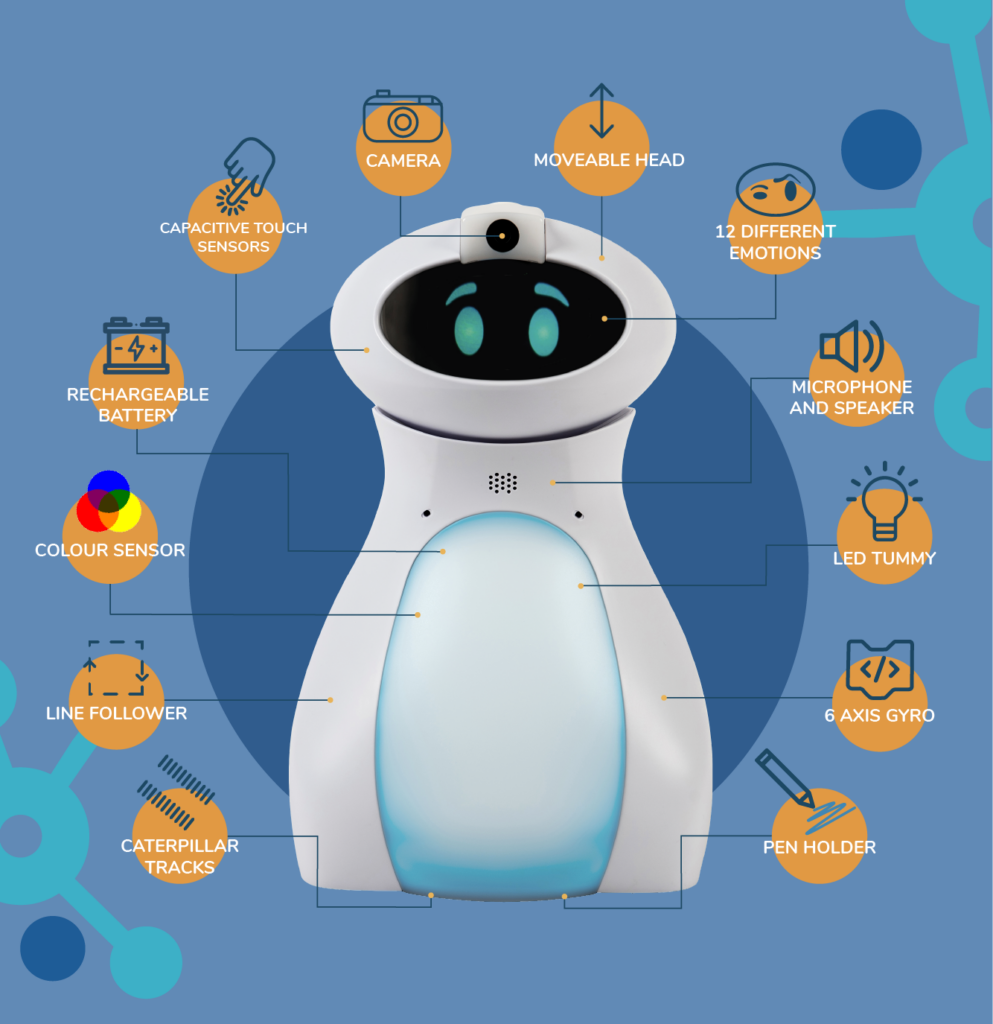The future of cross-curricular learning:
We are excited to introduce you to Oti-Bot, our most advanced, cross-curricular, programmable robot to date, designed to support the future of robotics.
Oti-Bot supports a wide range of computer science and coding skills, aligned to 21st-century skills development and integration of STEAM into your teaching, with advanced functions such as machine learning capabilities, accurate 360° movement and live video streaming.

What makes Oti-Bot so unique?
- Oti-Bot is built with Interchangeable tummies to enhance the input/output capabilities and support a multitude of different abilities and learning styles.
- Enable collaborative learning in the classroom by live video streaming Oti-Bot’s activities to multiple devices.
- All data collected via facial recognition is safely and securely stored on the robot without the need to connect to the internet or a network.
- Using well-known Scratch blocks to programme, users will be confident using all the different features packed into Oti-Bot.
- Control, stream, and programme interactive algorithms, all from the accessible and friendly app.
- Oti-Bot has fully updateable firmware and a rechargeable battery, so he’ll last and be loved in the classroom for years to come.

4 C’s of Learning through Oti-Bot:
Critical thinking:
Oti-Bot’s many inputs/outputs and programmable features allow children to develop their coding, programming and problem-solving skills.
Collaboration:
Oti-Bot encourages collaboration within groups by using one robot but multiple devices, working as one to create different scenarios.
Creativity:
Oti-Bot provides the freedom for children to create and build algorithms which put in to practice a whole range of skill and knowledge – including block-based programmes for drawing, colour sensing and line follow.
Communication:
Oti-Bot can record, playback and stream audio and video, supporting speaking and listening skills. Facial recognition adds a new dimension and a humanoid element to Oti, using the face follow and emotion outputs to communicate with children.
